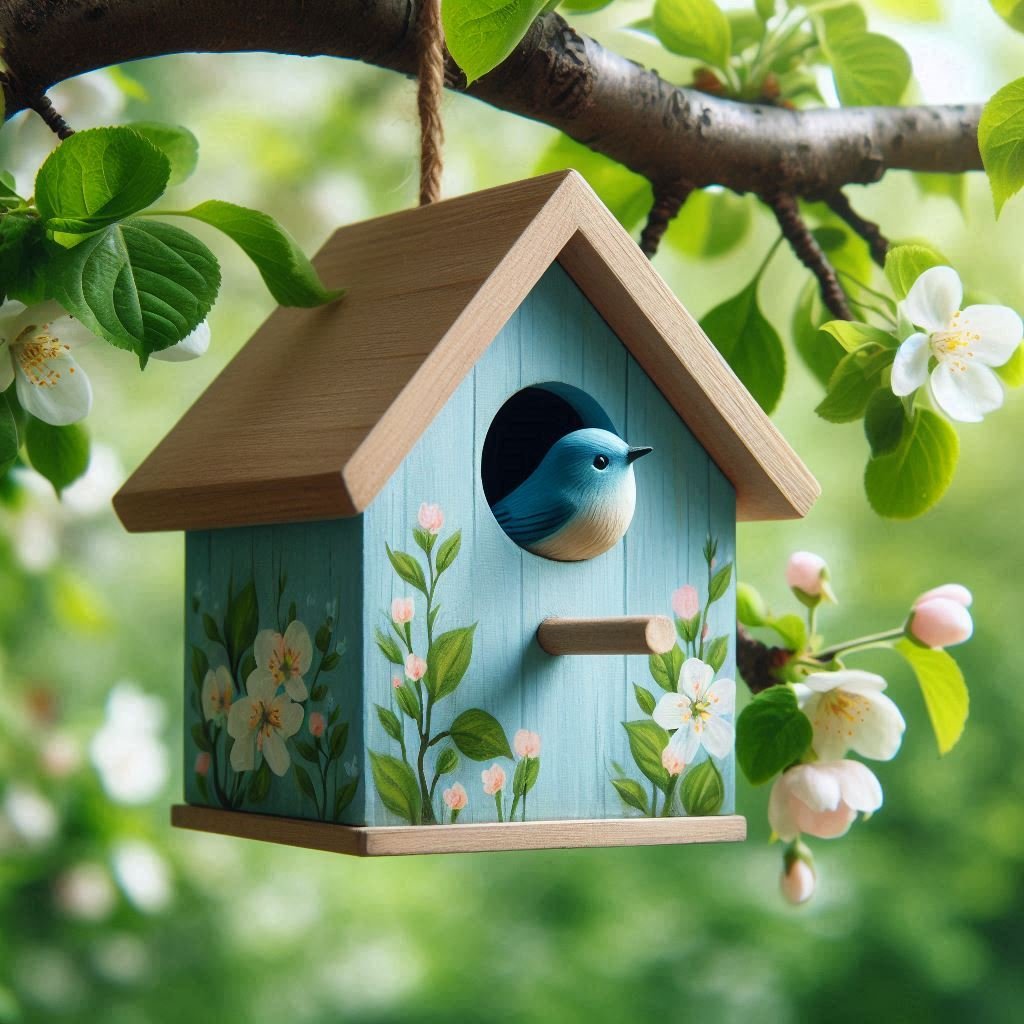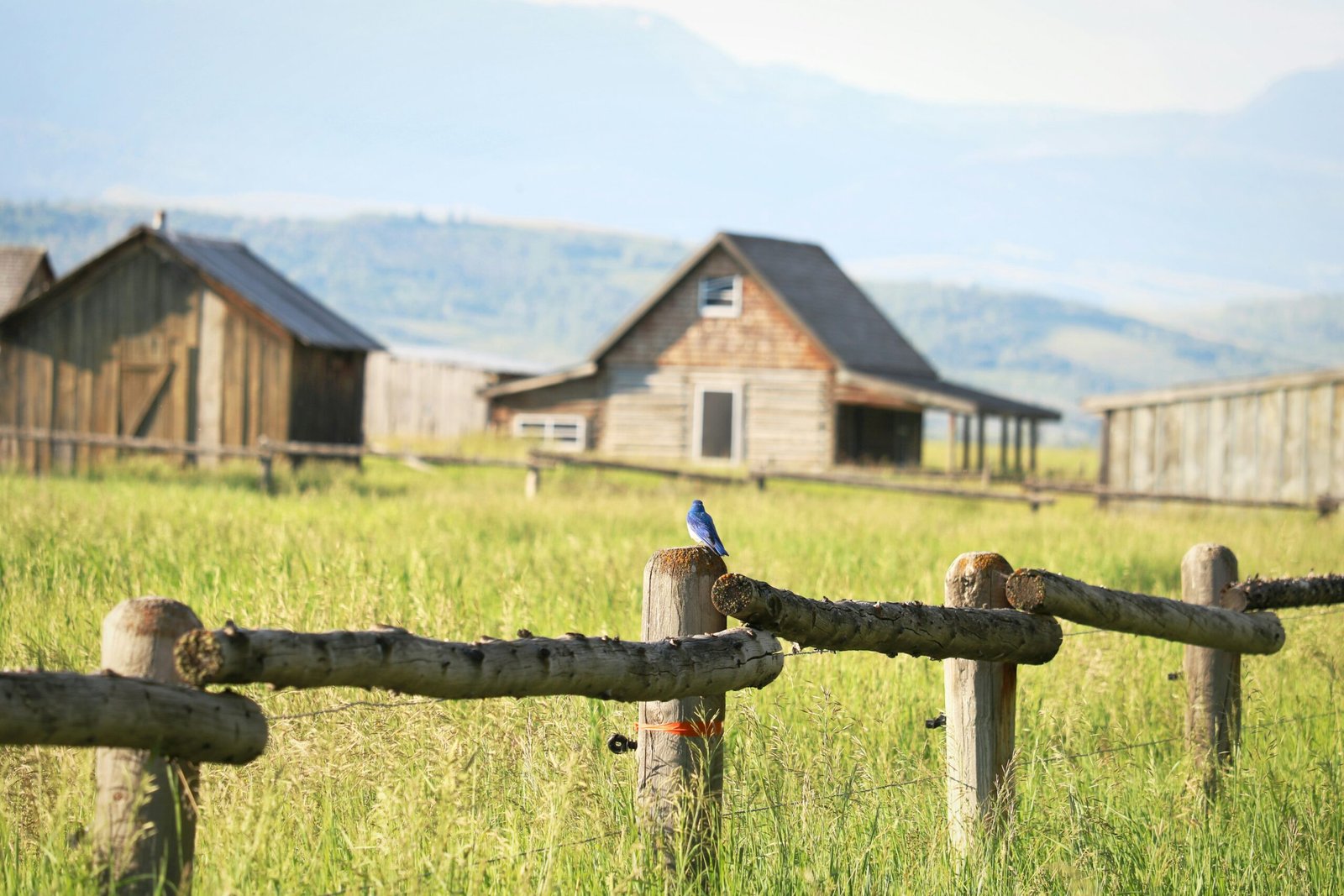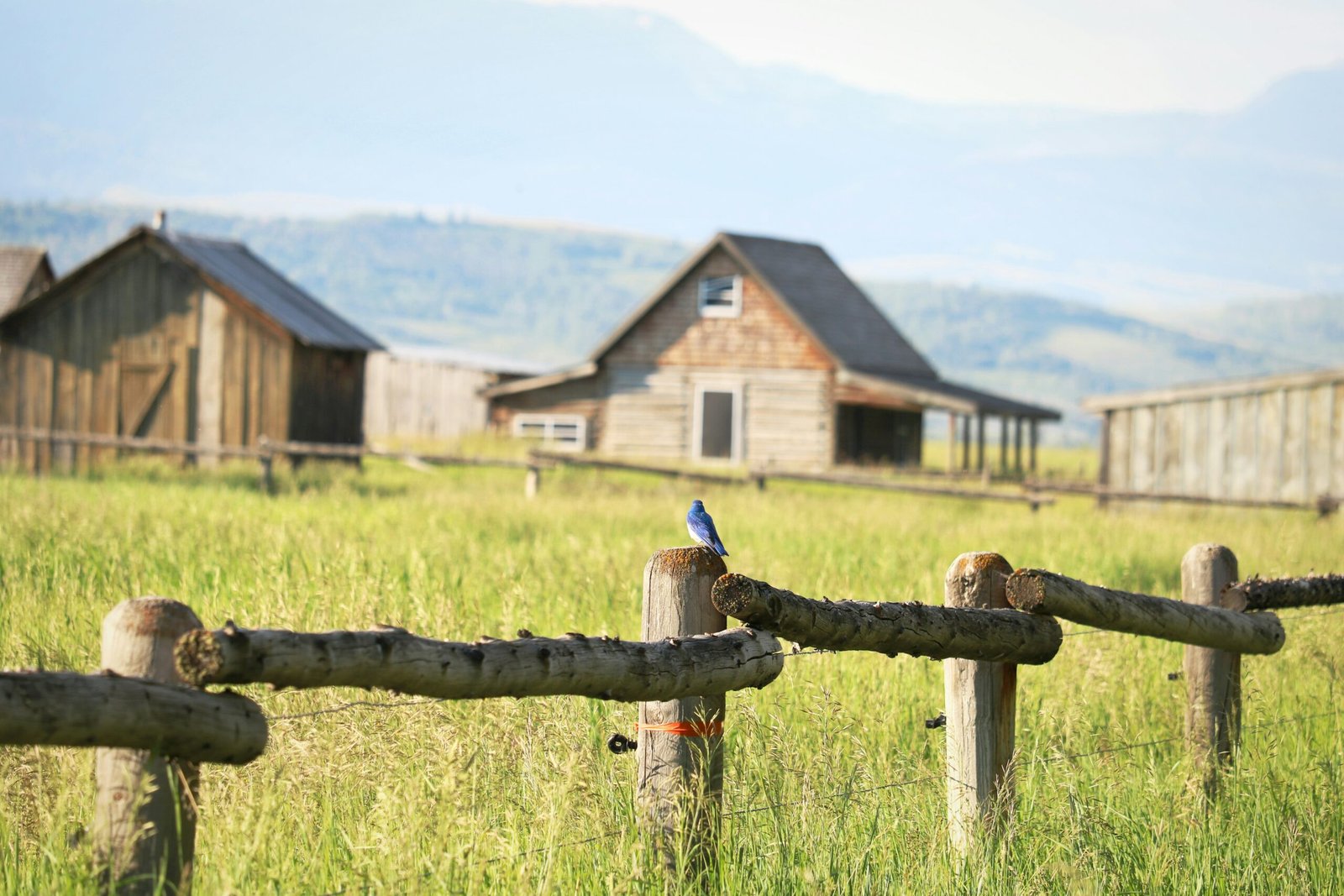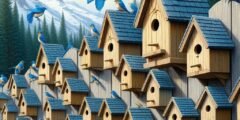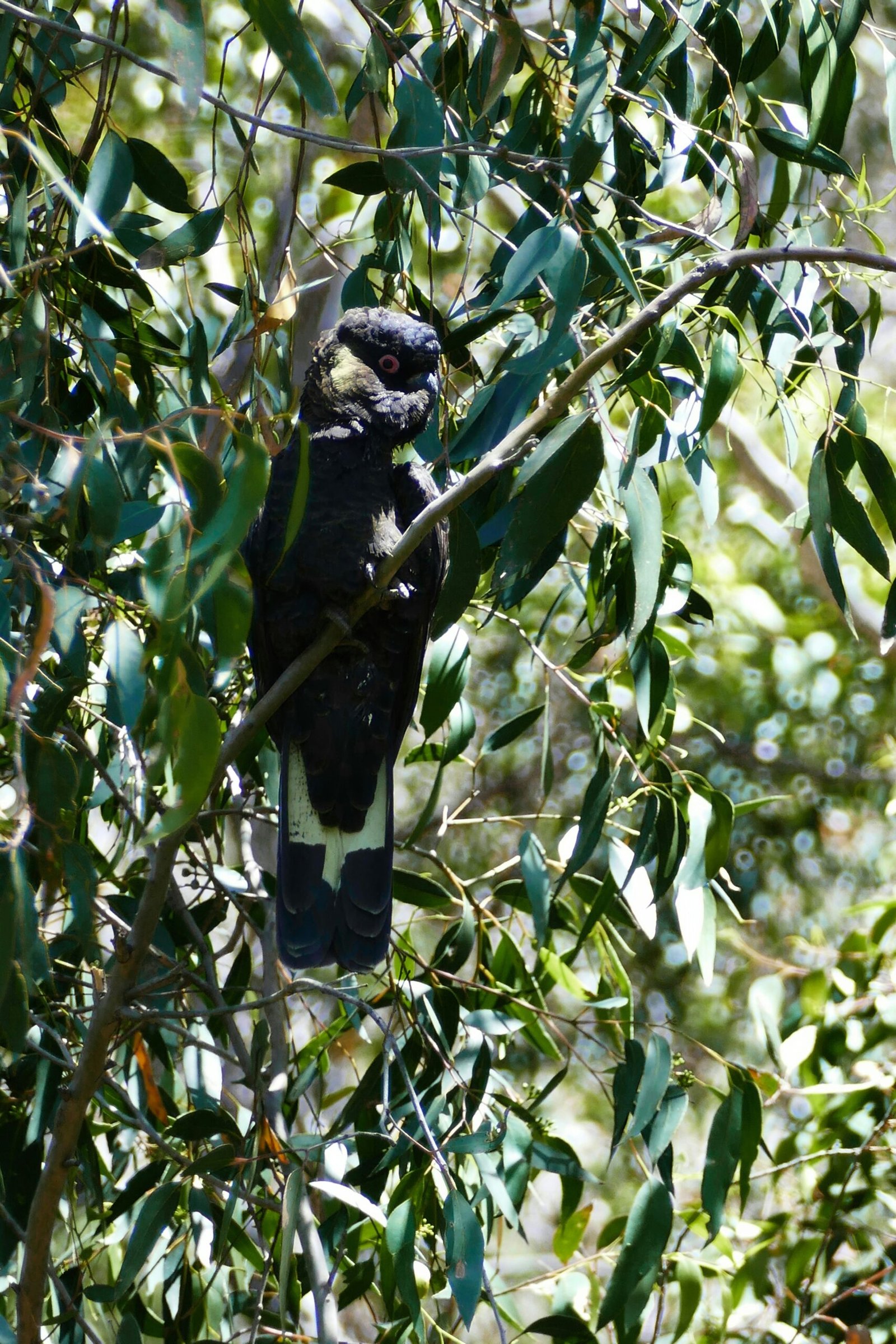Introduction
Bluebirds are cherished for their vibrant plumage and melodious songs, making them a beloved sight in many backyards. However, these avian wonders face numerous threats, particularly from predators that target their nests. Understanding what are some common predators of bluebirds nesting in houses is crucial for their conservation. The declining population of bluebirds makes it imperative to address these challenges, as they play a significant role in maintaining ecological balance by controlling insect populations.
Among the most prevalent threats to bluebirds are house sparrows, raccoons, and rat snakes. House sparrows, an invasive species, often displace bluebirds from their nesting sites, leading to fierce competition for limited resources. Raccoons, with their dexterous paws and keen sense of smell, can easily raid bluebird houses, causing significant harm to adults, eggs, and chicks. Rat snakes, known for their climbing ability, pose a silent yet deadly threat by preying on eggs and young birds.
Protecting bluebirds from these predators is not just about preserving their beauty; it is about maintaining the health of our ecosystems. As natural insect controllers, bluebirds help reduce the need for chemical pesticides, promoting a more balanced and sustainable environment. This blog post will delve deeper into the specific predators of bluebirds, providing insights and strategies to safeguard these beautiful birds and ensure their continued presence in our natural world.
What Are Some Furry Predators That Can Raid Bluebird Houses?
Bluebirds, while charming and beneficial for the ecosystem, face numerous threats from various furry predators. Chief among these are raccoons, known for their dexterous paws and climbing prowess. Raccoons can easily scale trees and posts to reach bluebird houses, often prying open the nest boxes to access the eggs or young birds inside. Their ability to manipulate objects makes them particularly formidable adversaries for bluebird nests.
In addition to raccoons, squirrels also pose a significant threat. These agile creatures can leap considerable distances and exhibit remarkable climbing skills. Squirrels may invade bluebird houses not only to prey on the birds but also to use the nest boxes for their purposes, such as storing food or creating nests of their own. Similarly, chipmunks, although smaller, are opportunistic and can exploit any opening to raid bluebird nests for eggs or fledglings.
To protect bluebird houses from these mammalian predators, several measures can be implemented. One effective strategy is the use of predator guards. These guards can be mounted on the poles or trees supporting the bluebird houses, making it difficult for raccoons, squirrels, and chipmunks to access the nests. Baffle-style guards, which are typically conical or cylindrical in shape, are particularly effective in preventing climbing animals from reaching the nest boxes.
Another useful deterrent is the installation of entrance hole restrictors. These devices limit the size of the opening to the nest box, allowing bluebirds to enter while keeping larger predators out. Ensuring that the bluebird house is mounted on a smooth, metal pole can also prevent climbing mammals from gaining traction. Regular maintenance and monitoring of the nest boxes are crucial to ensure these protective measures remain effective over time.
By understanding the threats posed by furry predators such as raccoons, squirrels, and chipmunks, and by implementing appropriate deterrents, one can significantly enhance the safety and success of bluebirds nesting in houses.
Do Snakes Pose a Threat to Bluebird Chicks in Their Nests?
Snakes, particularly rat snakes and other climbing species, represent a considerable threat to bluebird chicks nesting in houses. These reptiles are adept climbers, often navigating trees and other structures with ease to access their prey. Rat snakes, known for their ability to scale vertical surfaces, are particularly notorious for raiding bird nests. The primary factors contributing to their threat include their keen sense of smell and their ability to detect the presence of bluebird chicks through vibrations and other subtle cues.
Once a snake locates a bluebird nest, it can inflict significant damage. These predators can consume entire clutches of eggs or young chicks, drastically affecting bluebird populations in a given area. The presence of a snake in a nesting box can also discourage adult bluebirds from returning, thereby disrupting their breeding cycles.
To mitigate the threat posed by snakes, several preventive measures can be implemented. One effective method is the use of snake baffles. These devices, when installed on the mounting poles of nesting boxes, create a physical barrier that prevents snakes from reaching the nests. Snake baffles come in various designs, including cone-shaped and cylindrical, and are typically made from smooth materials that snakes find difficult to climb.
Another crucial preventive strategy is ensuring that bluebird houses are mounted at appropriate heights. Positioning nests at a minimum height of six feet can reduce the likelihood of snake predation, as it places the nests out of reach of most ground-dwelling reptiles. Additionally, regular monitoring and maintenance of nesting boxes can help detect and address any potential threats early on.
By understanding and addressing the risks posed by snakes, bluebird enthusiasts can better protect these vibrant songbirds and support their successful breeding. Implementing these measures not only safeguards the nests but also contributes to the overall conservation efforts for bluebird populations.
Besides Cats, Are There Other Common Household Pets That Might Harm Nesting Bluebirds?
Domestic pets, particularly cats, pose significant threats to bluebirds nesting in houses. Cats are natural predators and their hunting instincts can lead them to prey on adult bluebirds and their chicks. Free-roaming cats are especially problematic, as they can easily access nesting sites, causing considerable harm to bluebird populations. Both wildlife conservationists and bird enthusiasts emphasize the importance of keeping cats indoors or within enclosed outdoor spaces to mitigate their impact on bluebird habitats.
While cats are the most notorious culprits, other household pets can also disrupt bluebird nesting sites. Dogs, for instance, might not actively hunt birds, but their presence can still be detrimental. Dogs may inadvertently disturb nesting sites by barking, digging, or simply being too close to the nest, causing stress to both adult birds and their young. This stress can lead to abandonment of the nest or even injury to the birds.
To protect bluebirds from domestic pets, several measures can be implemented. For cat owners, keeping cats indoors is the most effective way to prevent them from accessing bird nesting sites. If this is not feasible, providing outdoor enclosures or “catios” can allow cats to enjoy the outdoors without posing a threat to wildlife. Dog owners should ensure that their pets are supervised and trained to avoid birdhouses and nesting areas. Installing birdhouses on poles or in locations that are difficult for pets to reach can also help safeguard bluebird nests.
In conclusion, while cats are the primary household pets that threaten bluebirds, dogs and other pets can also cause disturbances. Implementing preventive measures and being mindful of pet behavior around nesting sites can significantly enhance the protection of bluebirds nesting in houses.
Are There Aggressive Birds That Target Bluebird Eggs and Chicks?
One of the most significant threats to bluebirds nesting in houses comes from aggressive bird species, particularly house sparrows. House sparrows are notorious for their invasive behavior, often taking over bluebird nests, destroying eggs, and killing chicks. Their aggressive nature and adaptability make them formidable predators, posing a substantial risk to bluebird populations.
House sparrows tend to invade bluebird nesting boxes by first identifying and then forcibly entering these spaces. Once inside, they exhibit destructive behavior by puncturing bluebird eggs with their sharp beaks. The presence of house sparrows in a bluebird nest can be devastating, often resulting in the loss of an entire brood. Bluebird chicks, even if hatched, are not safe from these aggressive intruders. House sparrows have been known to peck and kill bluebird chicks, leaving nests either empty or with significant casualties.
To manage and minimize the impact of house sparrows on bluebird nests, several strategies can be employed. One effective approach is the design and placement of nest boxes. Opting for nest boxes with smaller entrance holes can help deter house sparrows, as they prefer larger openings. Additionally, placing nest boxes at a height of 5 to 7 feet and away from dense shrubbery can make them less accessible to these aggressive birds.
Another useful tactic is the use of sparrow-resistant nest box designs such as the Gilbertson PVC bluebird nest box or the Slot-box design. These designs are less appealing to house sparrows while still attracting bluebirds. Regular monitoring of nest boxes is also crucial. Removing house sparrow nests immediately upon detection can prevent them from establishing a foothold. Employing these strategies can significantly reduce the threat posed by house sparrows, thereby enhancing the survival rate of bluebird eggs and chicks.
How Can House Sparrows Become a Problem for Bluebirds Using Nest Boxes?
House sparrows, although small and seemingly innocuous, pose a significant threat to bluebirds nesting in houses. These aggressive birds are known for their competitive behavior, often usurping bluebird nest boxes and even preying upon the bluebirds themselves. House sparrows exhibit highly territorial tendencies and are not hesitant to invade and claim nesting sites already occupied by bluebirds. Their presence can lead to violent confrontations, sometimes resulting in the death of bluebird chicks or adults.
The nesting habits of house sparrows further exacerbate the issue. Unlike bluebirds, which have a more peaceful nesting protocol, house sparrows are known to build bulky and messy nests composed of grasses, feathers, and various debris. They are persistent nesters, often filling nest boxes to the brim and obstructing the entryway, making it impossible for bluebirds to reclaim their territory.
The threat posed by house sparrows is not merely physical. Their aggressive nesting behavior can disrupt the breeding cycle of bluebirds, leading to decreased reproductive success and ultimately affecting the population dynamics of bluebirds in a given area. House sparrows’ ability to swiftly colonize and dominate nest boxes makes them a formidable adversary for bluebirds.
To mitigate the impact of house sparrows on bluebird populations, several practical solutions can be implemented. Regular monitoring of bluebird nest boxes is essential. This involves inspecting the boxes frequently to detect and remove any house sparrow nests before they become established. Sparrow spookers, devices designed to deter sparrows from entering nest boxes, can also be effective. Additionally, opting for nest boxes with specific entrance hole sizes that are less appealing to sparrows but suitable for bluebirds can help reduce sparrow occupancy.
By understanding the behavior and nesting habits of house sparrows, and employing targeted preventive measures, we can better protect bluebird populations and ensure their continued success in using nest boxes.
Are There Any Other Cavity-Nesting Birds That Compete with Bluebirds for Nesting Sites?
When addressing the question of what are some common predators of bluebirds nesting in houses, it’s essential to consider the competition bluebirds face from other cavity-nesting birds. Several species, including starlings and wrens, compete for the same nesting sites, posing significant challenges for bluebird populations. This competition can be particularly fierce because suitable nesting cavities are a limited resource.
European Starlings (Sturnus vulgaris) are among the most aggressive competitors. These non-native birds are known for their assertive behavior, often taking over nesting sites and displacing bluebirds. Starlings are larger and can be quite territorial, making it difficult for bluebirds to reclaim their nesting spaces once starlings have settled in. House Wrens (Troglodytes aedon), though smaller, are also formidable competitors. They have been observed destroying bluebird eggs and even removing nesting materials to make the site less attractive to bluebirds.
The impact of this competition on bluebird populations can be significant. With fewer available nesting sites, bluebirds may experience reduced breeding success, leading to population declines. However, there are strategies that can help mitigate this competition and encourage bluebirds to nest successfully. One effective approach is to use bluebird-specific nest boxes. These boxes are designed with entry holes that are appropriately sized to exclude larger competitors like starlings while still allowing bluebirds to enter. For instance, a hole diameter of about 1.5 inches is ideal for bluebirds but too small for starlings.
Additionally, nest box placement plays a crucial role. Positioning nest boxes in open areas away from dense shrubbery can deter House Wrens, who prefer more concealed locations. Regular monitoring and maintenance of nest boxes can also help. By frequently checking the boxes, one can remove any nesting materials left by competitors and ensure that the boxes remain suitable for bluebirds.
Implementing these strategies can enhance bluebird nesting success and help maintain their populations, despite the ongoing competition from other cavity-nesting birds.
Since Bluebird Houses Are Often Mounted on Poles, What Climbing Animals Might Be a Threat?
Various climbing animals can pose significant threats to bluebirds nesting in houses mounted on poles. Chief among these are raccoons, snakes, and squirrels, each of which has unique methods for accessing nests and preying on bluebirds and their eggs.
Raccoons are particularly adept climbers, equipped with sharp claws and a keen sense of smell that enables them to locate and reach bluebird nests. They can easily scale poles to access the nest boxes, often causing significant damage in the process. Once inside, raccoons will consume both the eggs and the young birds, posing a serious threat to the bluebird population.
Snakes, another common predator, can also pose a substantial risk. They are able to slither up poles to reach the nest boxes, often unnoticed until it is too late. Snakes primarily prey on eggs and nestlings, and their infiltration can result in the total loss of a bluebird clutch. Garter snakes and rat snakes are among the most common species that threaten bluebird nests.
Squirrels, though typically seed eaters, can also become problematic. They might not always aim to harm the bluebirds directly, but their incessant curiosity and gnawing behavior can damage nest boxes, making them more vulnerable to other predators. Additionally, squirrels may compete for the nesting space, sometimes evicting bluebirds from their homes.
Effective solutions to these predatory threats include the use of pole baffles and predator guards. Pole baffles are designed to prevent climbing animals from reaching the nest boxes by creating a barrier that is difficult to navigate. Predator guards, often made of metal or plastic, can be installed around the pole or the entrance of the nest box to deter predators. These tools are essential for those wondering what are some common predators of bluebirds nesting in houses and how to protect against them.
Implementing such protective measures can significantly decrease the risk posed by raccoons, snakes, and squirrels, ensuring that bluebirds can safely nest and thrive.
Do Bluebirds Have Any Predators to Worry About at Night?
Bluebirds are not exempt from nocturnal threats, and several predators pose a danger to these delicate songbirds during the night. Among the most notable nocturnal hunters are owls, which have sharp talons and keen night vision, making them formidable predators. Owls, particularly the Eastern Screech Owl and the Great Horned Owl, rely on their exceptional hearing and silent flight to locate bluebird nests. These owls are adept at pinpointing the location of a nest through the subtle sounds of nestlings or adult birds.
In addition to avian predators, certain mammals also pose a significant threat to bluebirds nesting in houses. Raccoons, for instance, are nocturnal creatures known for their dexterity and resourcefulness. They can easily climb trees and other structures to access bluebird houses, often reaching inside to snatch eggs or nestlings. Similarly, opossums and domestic cats can also be troublesome, using their climbing abilities to reach and disturb bluebird nests.
To safeguard bluebird houses from these nocturnal predators, several protective measures can be implemented. Ensuring that bluebird houses are securely mounted is a fundamental step. Placing these houses on poles or posts rather than trees can help deter climbing mammals. Additionally, installing predator guards, such as baffles, around the mounting poles can create a physical barrier that is difficult for predators to bypass.
Another effective deterrent is to place bluebird houses at an appropriate height, typically between five to seven feet off the ground. This makes it more challenging for predators to access the nests. Furthermore, using predator-proof entrance holes that are small enough to allow bluebirds in while keeping larger predators out can provide an added layer of security.
By understanding the behaviors and threats posed by nocturnal predators, bluebird enthusiasts can take proactive steps to protect these charming birds and ensure their safety during the vulnerable nighttime hours.
Overall, What Are the Biggest Challenges Bluebirds Face from Predators When Using Nest Boxes?
Bluebirds nesting in houses face a myriad of challenges from various predators, which significantly impact their survival rates and breeding success. Chief among these predators are raccoons, snakes, and domestic cats. Each of these presents unique threats that require careful consideration and intervention to mitigate their effects.
Raccoons are particularly adept at locating and accessing nest boxes. Their intelligence and dexterity allow them to open nest box doors and reach inside to prey on both eggs and nestlings. This makes it essential for nest boxes to be designed with predator guards and baffles to prevent raccoon access.
Snakes, especially rat snakes, pose another significant threat to bluebirds. Their ability to climb and infiltrate nest boxes can result in the loss of entire broods. Installing snake guards and placing nest boxes on metal poles instead of trees can help reduce this risk. Additionally, maintaining a clean area around the nest box can deter snakes from approaching.
Domestic cats, both feral and pet, are skilled hunters that can easily climb to reach nest boxes. Their presence near bluebird nesting sites can lead to substantial predation. To protect bluebirds, it is crucial to place nest boxes in locations that are difficult for cats to access and to encourage responsible pet ownership, including keeping cats indoors.
The cumulative impact of these predators on bluebird populations is considerable. Predation can lead to decreased fledgling success rates, reduced adult survival, and ultimately, a decline in overall bluebird numbers. These challenges underscore the importance of implementing protective measures, such as predator guards, proper nest box placement, and habitat management, to ensure the safety and success of bluebird nesting efforts.
By understanding and addressing the threats posed by common predators of bluebirds nesting in houses, conservationists and bird enthusiasts can significantly enhance the prospects for these beloved birds, ensuring their continued presence in our natural landscapes.
FAQs
Q1: How can I identify predator activity around bluebird houses?
A: Identifying predator activity can be crucial to protecting bluebirds. Look for signs such as disturbed or missing nesting materials, broken eggshells, or feathers around the nest box. Other indicators include scratch marks or gnawing on the nesting box, and the presence of droppings from predators like raccoons or snakes.
Q2: What should I do if I notice a predator attack on a bluebird nest?
A: If you observe a predator attack, it’s important to act quickly. First, assess the damage and the safety of the remaining birds. If any bluebirds are still alive, carefully move them to a temporary, safe location while you repair or reinforce the nesting box. Consider installing predator guards or relocating the box to a safer spot.
Q3: How can I maintain a safe environment for bluebirds nesting in houses?
A: To maintain a safe environment for bluebirds, regularly inspect the nesting boxes and surrounding areas. Ensure that the boxes are mounted on poles with baffles to deter climbing predators. Use predator-proof entrance holes and consider placing the boxes away from dense vegetation where predators can hide. It’s also beneficial to keep the area clean to avoid attracting predators like ants and wasps.
Q4: Are there specific materials or designs that can make bluebird houses safer?
A: Yes, certain materials and designs can enhance the safety of bluebird houses. Opt for sturdy, weather-resistant materials like cedar or redwood. Ensure that the entrance hole is the right size to prevent larger predators from entering. Designs that feature overhanging roofs and recessed floors can also help deter predators. Installing predator guards or metal plates around the entrance hole can provide additional protection.
Q5: What types of predators commonly threaten bluebirds nesting in houses?
A: Bluebirds nesting in houses face threats from various predators. Common predators include raccoons, snakes, cats, and larger birds like hawks and owls. Additionally, smaller predators such as ants, wasps, and mice can also pose threats by invading the nests and harming the eggs or chicks.
Conclusion
Protecting bluebirds from predators is crucial for their survival and the overall health of our ecosystems. Throughout this article, we have identified several common predators of bluebirds nesting in houses, including raccoons, snakes, and domestic cats. Each of these threats poses significant risks to bluebird populations, necessitating proactive measures to ensure the safety of these birds.
Readers are encouraged to implement protective strategies such as installing predator guards and maintaining predator-proof birdhouses. Simple actions like these can significantly reduce the risk of predation and contribute to the thriving of bluebird communities.
Community efforts play a vital role in bluebird conservation. By working together, individuals can share knowledge, resources, and strategies to create safer environments for bluebirds. Local wildlife organizations and birdwatching groups often provide valuable support and can be great partners in these endeavors.
For those interested in delving deeper into bluebird conservation, numerous resources are available. Books, online forums, and educational websites offer extensive information on how to protect bluebirds and enhance their habitats. Engaging with these resources can further empower readers to make informed decisions and take effective actions.
In conclusion, safeguarding bluebird nests from predators is a shared responsibility that benefits both the birds and our environment. By staying informed and actively participating in conservation efforts, we can ensure that bluebirds continue to grace our landscapes for generations to come.
